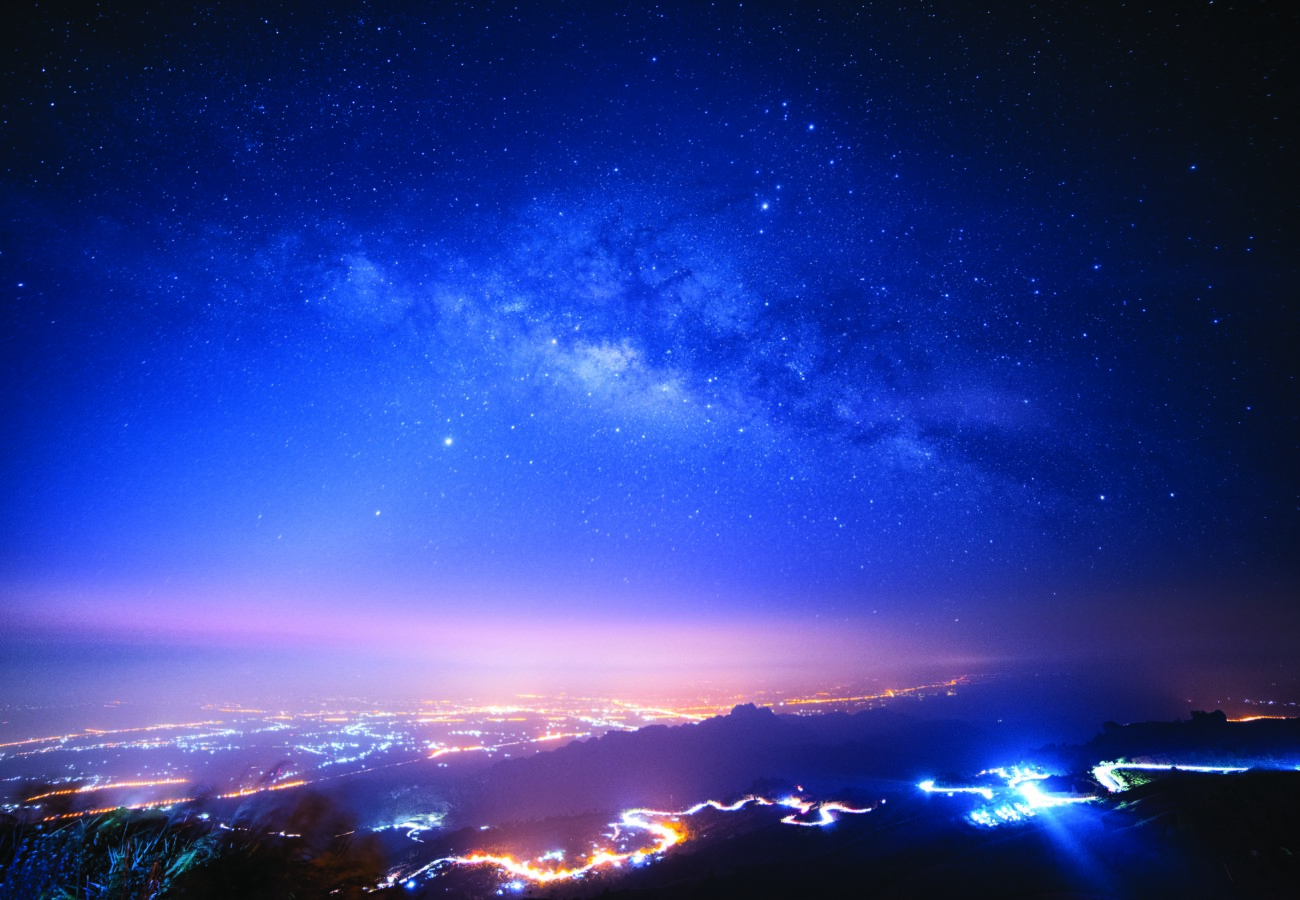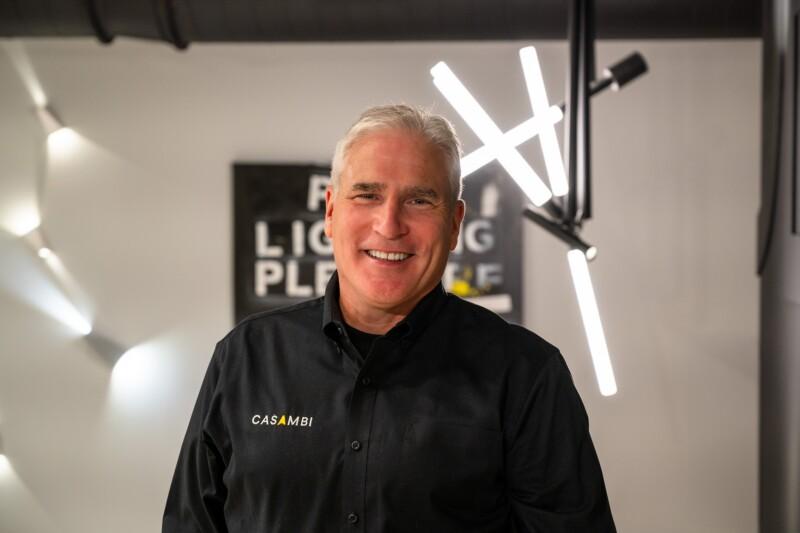Bring back the dark sky

Tech developments are largely predicated on the idea of humans overcoming nature. We invented artificial light to outwit the sun. Now we’re seeking solutions to enable a more symbiotic connection.
Light is essential for life. That’s why we’ve worshipped the sun for millennia. Or at least until the advent of artificial light. Man-made light has helped grow economies and communities by stretching the time during which business and outside pursuits can securely and comfortably take place. However, through the indiscriminate use of lights, we’ve lost touch with nature and are now beginning to understand the detrimental consequences thereof.
Light pollution – the inappropriate or excessive use of artificial light at night (ALAN) – not only deprives us of enjoying and seeing a spectacular starry night sky but has an adverse effect on humans and animals by disrupting our circadian rhythms. Beyond sleep disturbance, desynchrony with the biological clock can increase the risk of obesity, metabolic disease, and certain types of cancer. For animals, artificial light pollution can cause disorientation, abruptly altering feeding, pollination, and migration patterns resulting in biodiversity loss.
There are several types of light pollution:
Skyglow is the combination of reflected and unshielded artificial light in the sky. 80% of the world’s population lives under skyglow according to the groundbreaking 2016 study “World Atlas of Artificial Night Sky Brightness”.
Glare is the excessive brightness that causes visual discomfort.
Light trespass refers to artificial light that spills into someone’s property without permission. A common example of light trespass would be light intended to illuminate the public road outside your home entering through your bedroom window and disturbing your sleep.
Clutter is the generation of light pollution through the grouping of bright and excessive light sources to dazzling and distracting effect.
Light pollution is a global issue. Scientists estimated that globally we spend at least $50 billion in energy costs each year (representing 250,00 gigawatt-hours of energy) to produce light that escapes into space. This constitutes at least 1% of world GHG emissions. Light pollution must be taken seriously if we want to achieve the ambitious goals established in the Climate Targets Plan, the Biodiversity Strategy and the Zero Pollution Action Plan.
Many people and organizations are working to reduce light pollution because light is imperative, but darkness is too. We can all take action to bring back the natural night sky. Principles such as using lighting only when and where it’s needed, closing window blinds to keep light inside at night, or adjusting outdoor lighting fixtures to shield and direct the light downwards can make a difference.
Casambi’s technology can play a key role in minimizing light pollution. We offer a wireless lighting control system that provides lighting designers and manufacturers the ability to wirelessly link devices together – via Bluetooth Low Energy (BLE) – enabling the creation of customizable smart lighting networks that are configured and controlled using the Casambi App.
Casambi allows for the instant precision-tweaking of light temperature, color, positioning, and brightness at the touch of a button. The chipsets we use also offer long-range radio modes to meet the demand for wireless communication within lighting networks installed in vast outdoor spaces. This range can extend to 200 meters with a good line of sight connection between nodes.
By using LED lighting with Casambi control, you can:
Dim lights: Lighting can be adjusted in real-time to the lowest level required so that it is not a touch brighter than necessary.
Provide light only when it is useful: Control strategies involving motion detectors and timers can be programmed to provide lighting only when it is needed.
Adjust color temperature: By using tunable white LED luminaires it is possible to control the color temperature. Warmer light is known to cause less disruption to the circadian rhythm of humans and other species, while cool white lighting should be avoided as it emits in the spectrum of blue and violet. Blue light has been proven to reduce the levels of melatonin – a natural hormone associated with the regulation of sleep-wake cycles.
Set circadian profile: From the Casambi App, a customized circadian rhythm can be programmed through a response graph that displays the hours of the day and color temperature. This automatic color temperature management can easily be modified and added to a scene.
Control motorized blinds: With a Casambi module, blinds, shades, and curtains can be controlled to keep the light inside the building.
Improve lighting fixtures: Casambi has partnered with the industry’s leading brands to provide a huge ecosystem of products. Collectively, we offer a selection of properly shielded Casambi Ready luminaires and full cutoff fixtures to prevent light from escaping above the horizontal plane.
To date, Casambi has been specified in over 150,000 projects worldwide, spanning every application from small high-end residential to 10,000+ node industrial spaces. Many, if not all, of these projects have contributed to reducing light pollution.
Casambi control was included with the new lighting system recently deployed to replace the old, energy-hungry, highly light-polluting setup at the Panathenaic Stadium in Athens – the birthplace of the modern Olympics. This update has significantly enhanced the sustainability credentials of the monumental outdoor site: Light pollution has been reduced by 70% and energy requirements by half.
Another successful case is the BMX’ing Park in Blegny, Belgium. Casambi met all the club manager’s requirements for the new lighting control system: A system that is easy to use, energy efficient, easy to maintain, and would not disturb neighboring properties with any light pollution.
With modern technology and collaboration, we can quickly restore and protect the natural night environment where darkness is once again cherished thanks to harmonious and sustainable artificial lighting.
Interested in learning more about Casambi? Drop us a note, and we’ll reach out to you:



